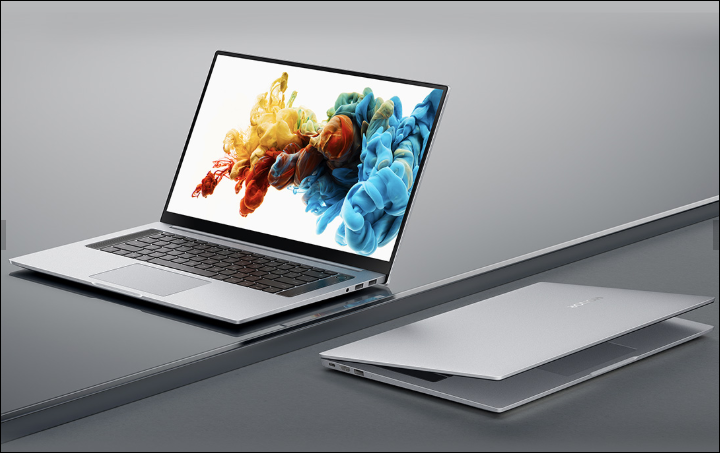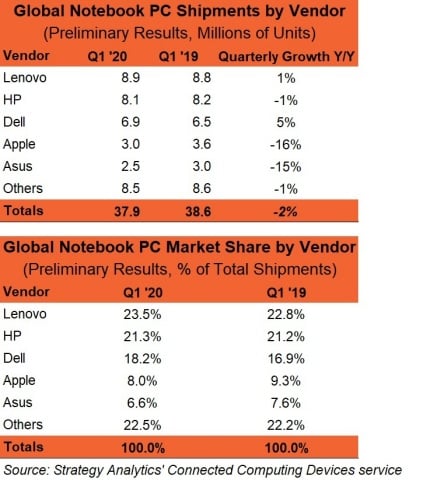Several industries experienced a horrible first quarter of 2020 as a result of the Coronavirus pandemic. The smartphone industry wasn’t spared except in India where a positive result was still posted. The notebook market equally escaped the worst of the COVID 19-induced initial downturn. due to the COVID-19 outbreak.
A report by market research firm Strategy Analytics shows that the notebook market shrank by only -2% year-on-year in Q1 2020. The report predicts bigger challenges ahead as depressed consumer demand spreads across the world in Q2, leaving top notebook vendors in a precarious situation.
Lenovo maintained the leadership of the notebook market with a gross shipment of 8.9 million units and a market share of 23.5%. HP followed closely with a gross shipment and market share of 8.1 million units and 21.3% respectively. Dell shipped 6.9 million units in Q1 2020, commanding an estimated 18.2% share of the market. Also in the top 5 is Apple with an estimated 3 million gross shipment and market share of 8%. ASUS completes the top 5 shipping 2.5 million units of notebook PC with an estimated 6.6% market share.
Chirag Upadhyay Senior Research Analyst stated, “Notebook vendors with a heavy reliance on China for its supply chain and those which did not have high levels of inventory before the COVID-19 outbreak had (the) most difficulty in Q1 on a global basis. From a consumer demand standpoint, the vendors which are most reliant on the Chinese domestic market experienced the biggest downturns. All of that aside, the notebook market only shrank -2% year-on-year and compared to most other consumer electronics segments, this should be considered a success in a very tough environment.”
Eric Smith, Director – Connected Computing added, “We expect that as COVID-19 spreads globally in Q2, large corporations and educational institutions will place more orders for notebooks to support work/learn-from-home initiatives around the world. As more families are stuck in their homes during quarantine orders, there are too few productivity devices for all members of a household to get their work done. Consumer demand will be soft as average people face economic hardship, but commercial demand could balance out that softness.”
UP NEXT: Best custom ROMs for Realme X2 Pro you should check!
(source)







